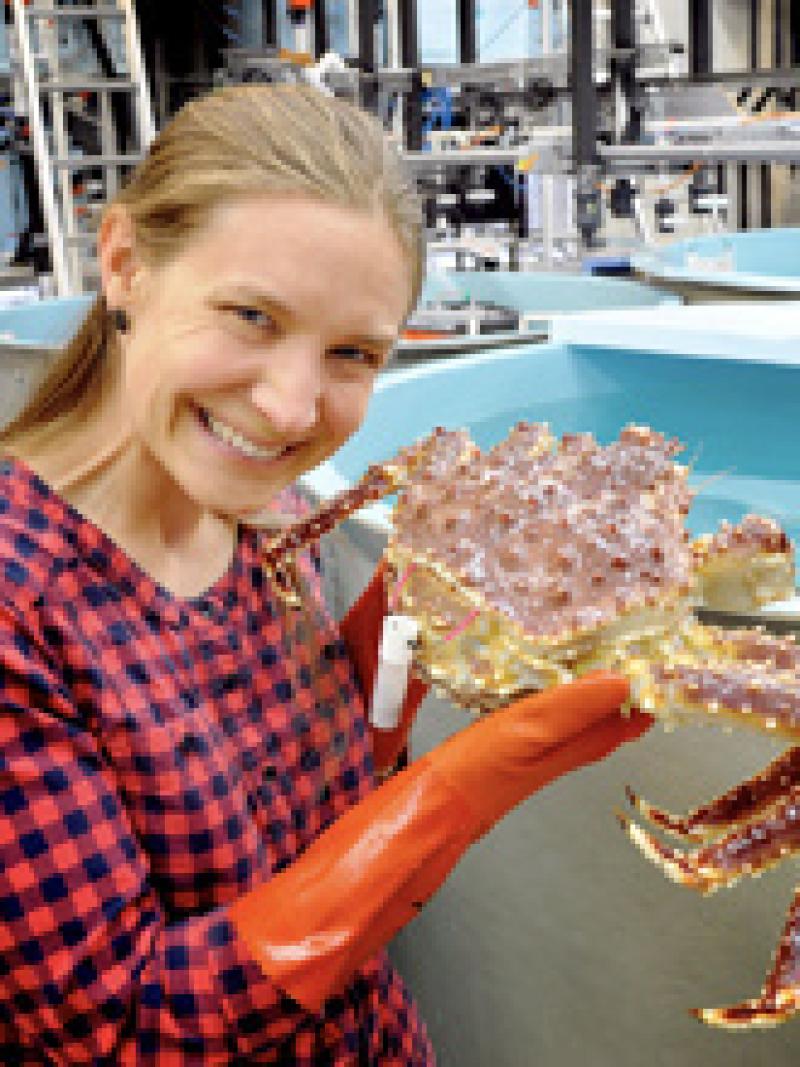
Leah Zacher with Red king crab.
You have probably seen the displays of long, spikey, king crab legs on ice at the grocery store – generally at exorbitant prices – and perhaps on special occasions, you’ve had these succulent legs dipped in butter. However, have you ever wondered what these legs were up to when they were out in the ocean attached to a crab? As a fisheries biologist studying crabs with NOAA, it is my job to figure out what these tasty crab are doing before they end up on our plates. In Alaska’s Bristol Bay red king crabs have been fished (and studied) for about a century, yet we still know very little about when, where, and why crabs move across the ocean floor. Yet crabs can move a lot when they want to – there has even been a report of a crab moving 13 km (8 miles) in a single day! That’s a lot for an animal the size of a cantaloupe, that has to walk on six gangly legs.

Bristol Bay red king crab occur north of the Alaska Peninsula, primarily within the area outlined in black. The red box and gray lined areas are closed to bottom trawling to protect red king crab.

Red king crab.
Especially as the climate changes, we need to better understand Bristol Bay red king crab distributions and habitat use at all times of year and the environmental variables that drive changes in distribution. As waters get warmer, some animals are moving north, following cooler waters, but it is not clear if the red king crabs will do the same. To help answer these questions, my colleagues and I are collaborating with the Bering Sea Fisheries Research Foundation (BSFRF), a fishermen-supported nonprofit organization. We’ll be attaching acoustic tags to crabs and following them through the seasons with a saildrone! I’m heading out to Dutch Harbor in June to get on a fishing boat chartered by the Bering Sea Fisheries Research Foundation to tag 150 mature male red king crab. After the crab are tagged and released, we’ll send out a saildrone, equipped with an acoustic receiver, in October and then the following April to relocate the king crabs and see where they’ve gone.



